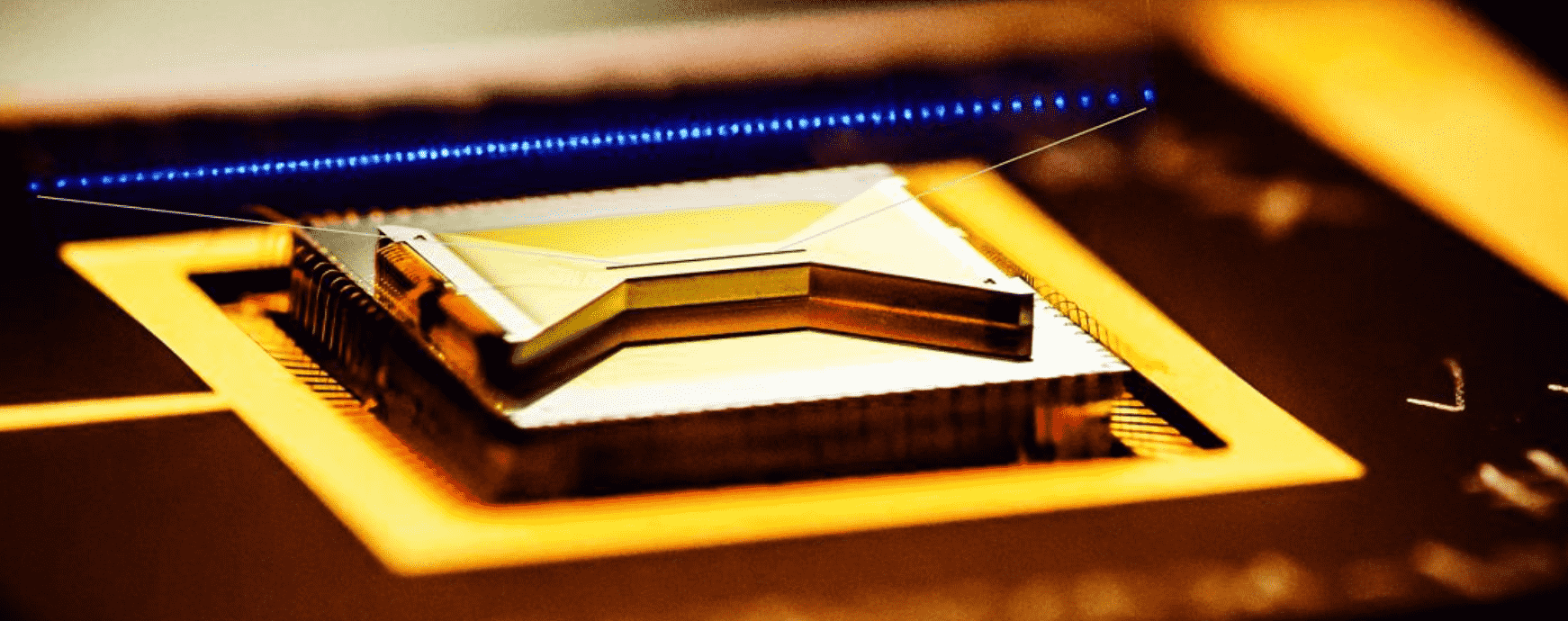There is a $15 million grant from the National Science Foundation to build a 100 qubit trapped ion quantum computer. The Software-Tailored Architecture for Quantum (STAQ) co-design project aims to build a quantum computer capable of solving challenging calculations within five years. Fred Chong, the Seymour Goodman Professor of Computer Science at the University of Chicago, will receive $3 million to lead the STAQ software team, bridging the gap between new architectures developed by the project and theoretical algorithms that apply quantum computing to chemistry, physics and other domains.
The STAQ project will explore a particular quantum computing technology using trapped ions—atoms with electrons removed to give them a positive charge. Researchers then suspend these atoms in an ultra-high vacuum, and use precise lasers to manipulate their quantum states and form qubits, the quantum analogue of a traditional logical computer bit.
Fred Chong’s contributions to STAQ will complement his leadership of the $10 million EPIQC (the Enabling Practical-scale Quantum Computation) project announced earlier this year. While the two projects share several researchers and a primary mission—shortening the timeline to realize the true promise of quantum computing—Chong said that they differ in their scope, with STAQ targeting a machine up to 100 qubits.
EPIQC is exploring similar techniques, but for multiple quantum technologies in addition to ion trap systems, and for systems that are farther in the future, utilizing hundreds or thousands of qubits. But both EPIQC and STAQ will work to train people and get more researchers interested in this topic by making it accessible and building tools that are open and usable for everyone.

Brian Wang is a Futurist Thought Leader and a popular Science blogger with 1 million readers per month. His blog Nextbigfuture.com is ranked #1 Science News Blog. It covers many disruptive technology and trends including Space, Robotics, Artificial Intelligence, Medicine, Anti-aging Biotechnology, and Nanotechnology.
Known for identifying cutting edge technologies, he is currently a Co-Founder of a startup and fundraiser for high potential early-stage companies. He is the Head of Research for Allocations for deep technology investments and an Angel Investor at Space Angels.
A frequent speaker at corporations, he has been a TEDx speaker, a Singularity University speaker and guest at numerous interviews for radio and podcasts. He is open to public speaking and advising engagements.

